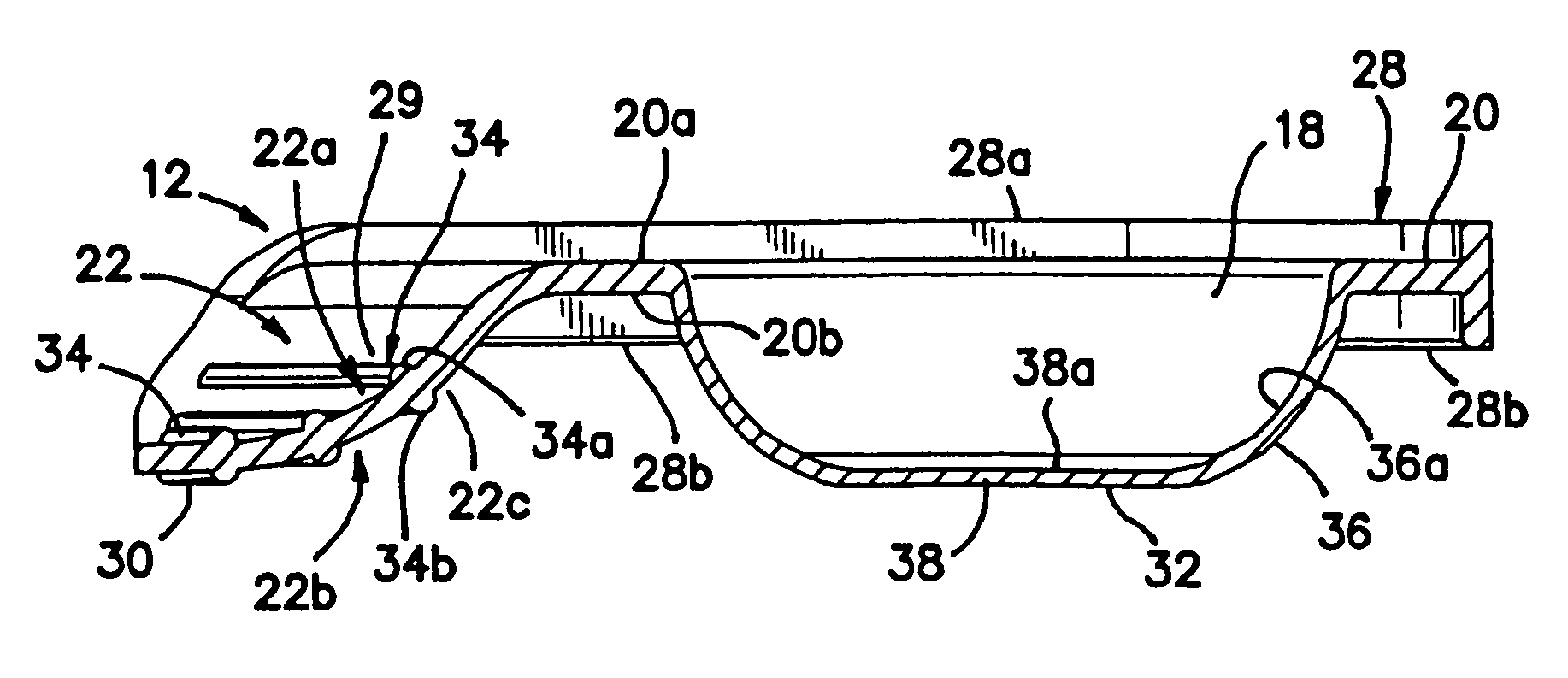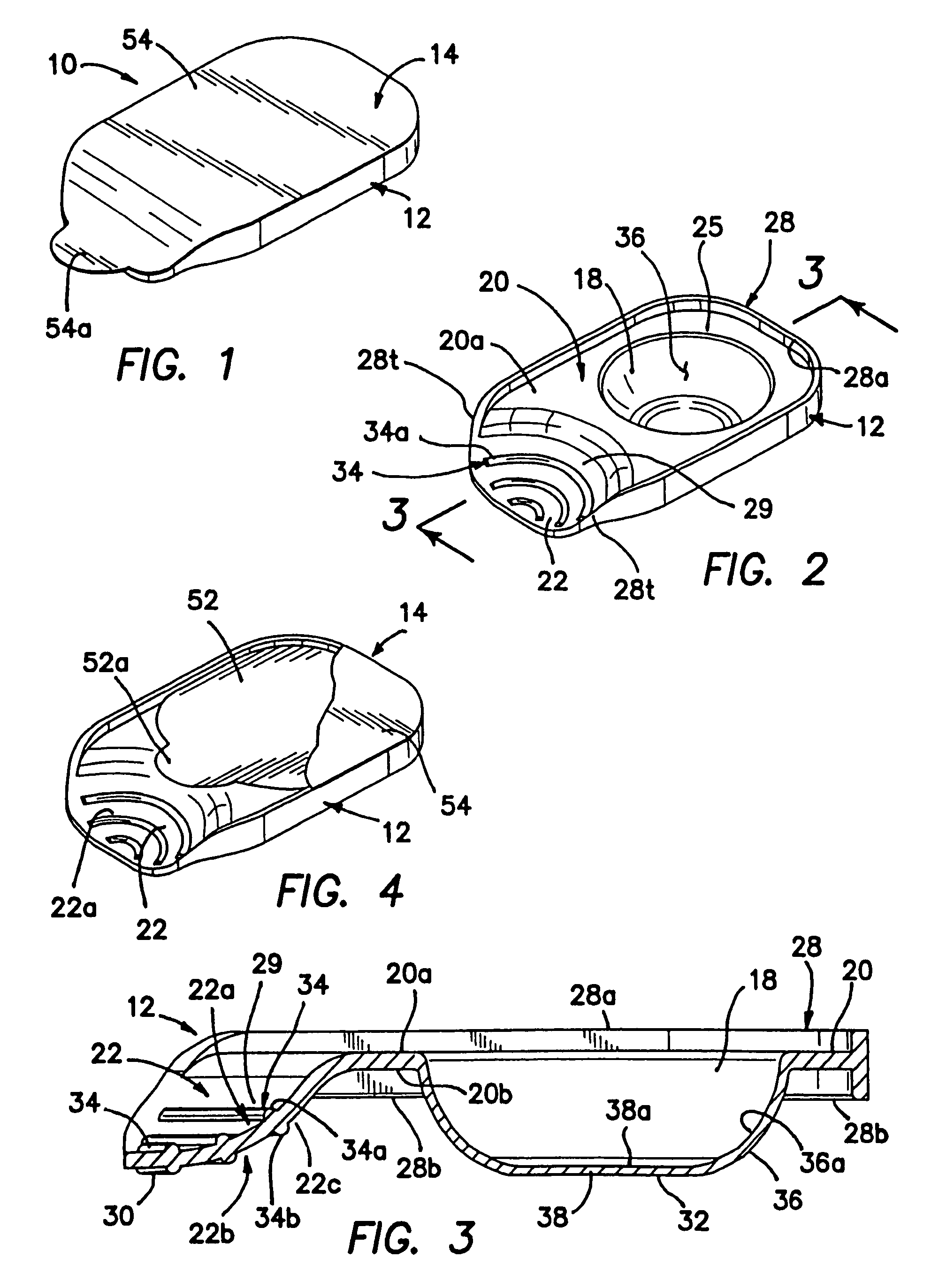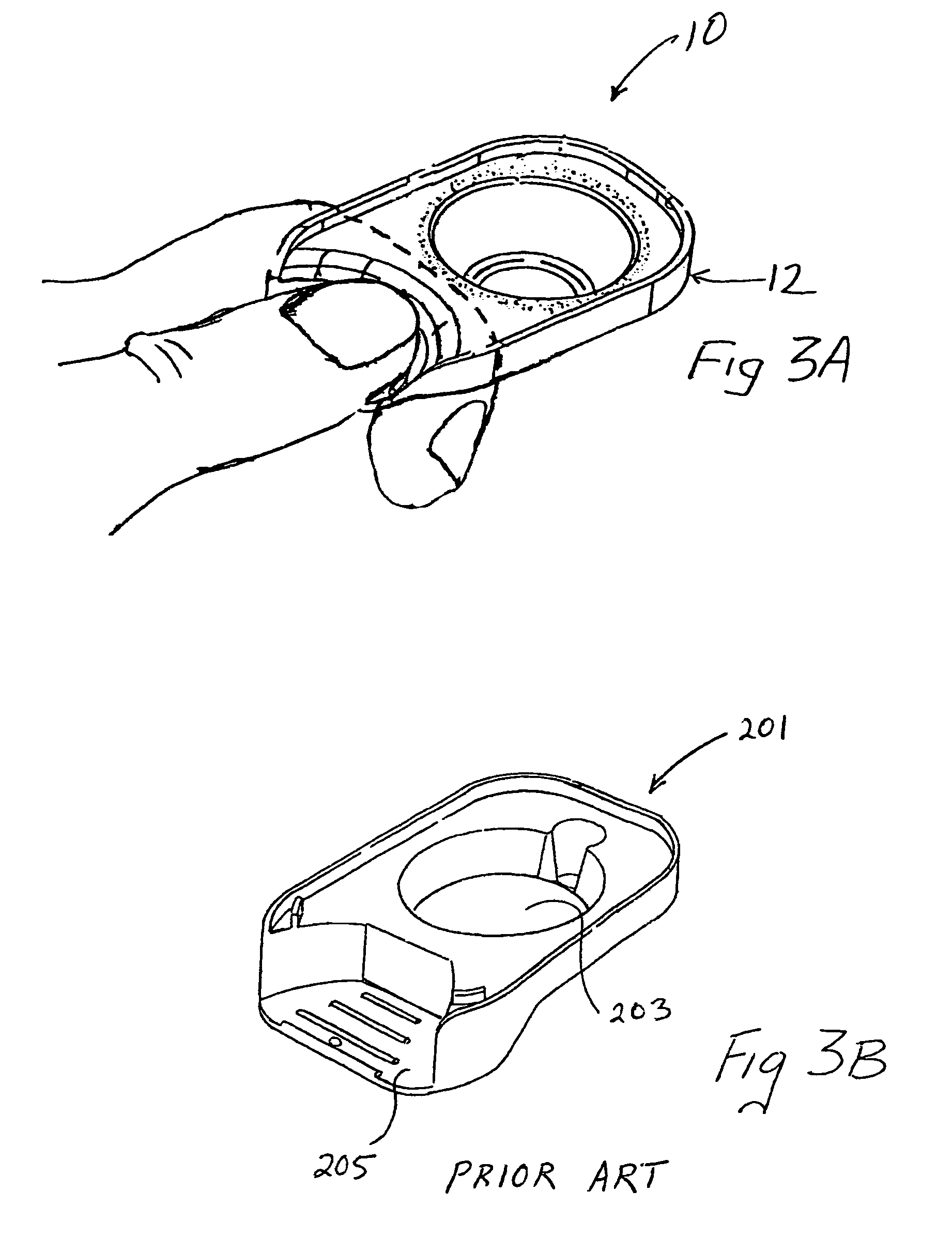Contact lens package
a technology for contact lenses and packaging, which is applied in the field of contact lens manufacturing, can solve the problems of increasing the chance that the lens will tear when the package is removed, grasping and removing, and reducing so as to reduce the tendency to stick together, reduce the amount of surfactant, and reduce the effect of manufacturing efforts
- Summary
- Abstract
- Description
- Claims
- Application Information
AI Technical Summary
Benefits of technology
Problems solved by technology
Method used
Image
Examples
Embodiment Construction
[0036]Turning now to FIG. 1, a contact lens package, in accordance with the present invention, is shown generally at 10.
[0037]The package generally comprises a base member 12 and a cover assembly 14. The invention will be more clearly understood and appreciated with reference to FIG. 2 which shows the package 10 shown in FIG. 1 with the cover assembly 14 removed from the base member 12. As shown, the base member 12 includes a cavity 18 for containing a contact lens (not shown) immersed in an amount of a solution. The term “contact lens” as used herein is intended to embrace an ophthalmic lens which, after its removal from a mold assembly in which it is made, is of a structure, size, shape and power that it can be worn on or in the eye of an individual. The base member 12 further includes a peripherally located flange region 20 at least partially surrounding an opening of the cavity 18, and a grip region 22 which is recessed with respect to the flange region 20. The cover assembly 12...
PUM
| Property | Measurement | Unit |
|---|---|---|
| contact angle | aaaaa | aaaaa |
| contact angle | aaaaa | aaaaa |
| angle | aaaaa | aaaaa |
Abstract
Description
Claims
Application Information
 Login to View More
Login to View More - R&D
- Intellectual Property
- Life Sciences
- Materials
- Tech Scout
- Unparalleled Data Quality
- Higher Quality Content
- 60% Fewer Hallucinations
Browse by: Latest US Patents, China's latest patents, Technical Efficacy Thesaurus, Application Domain, Technology Topic, Popular Technical Reports.
© 2025 PatSnap. All rights reserved.Legal|Privacy policy|Modern Slavery Act Transparency Statement|Sitemap|About US| Contact US: help@patsnap.com



